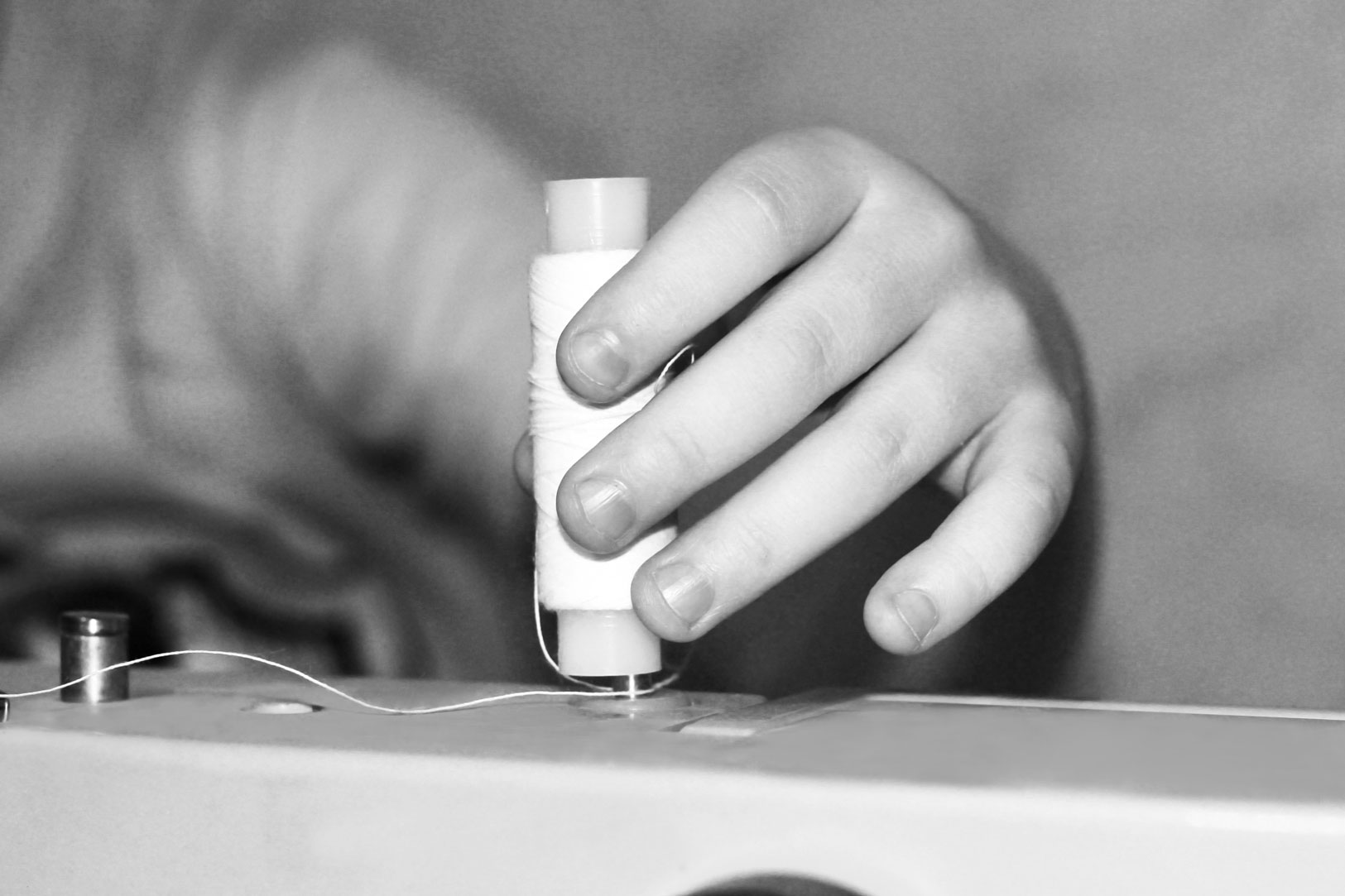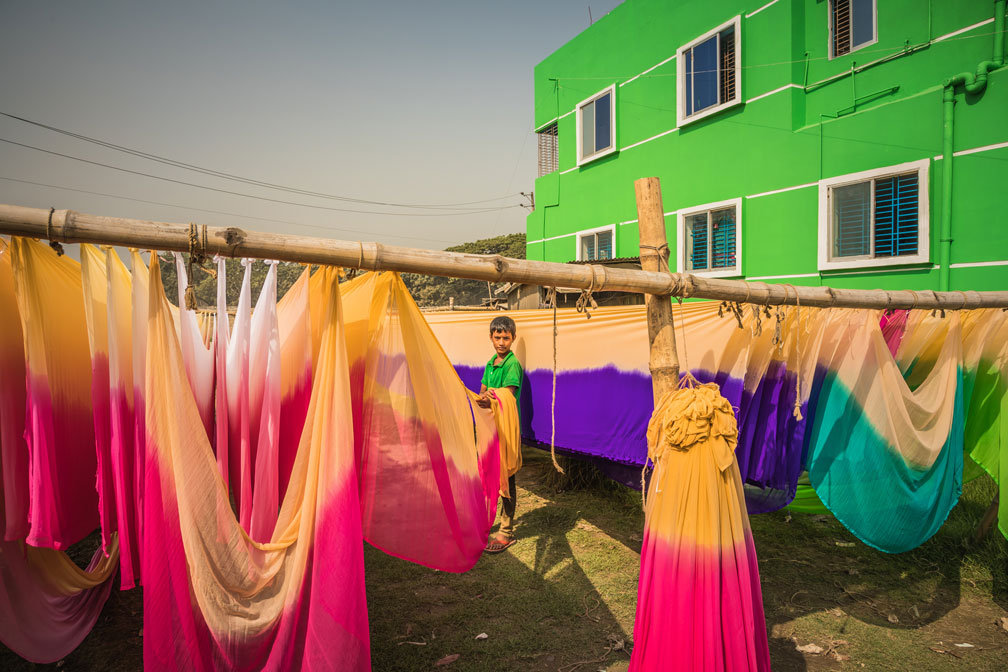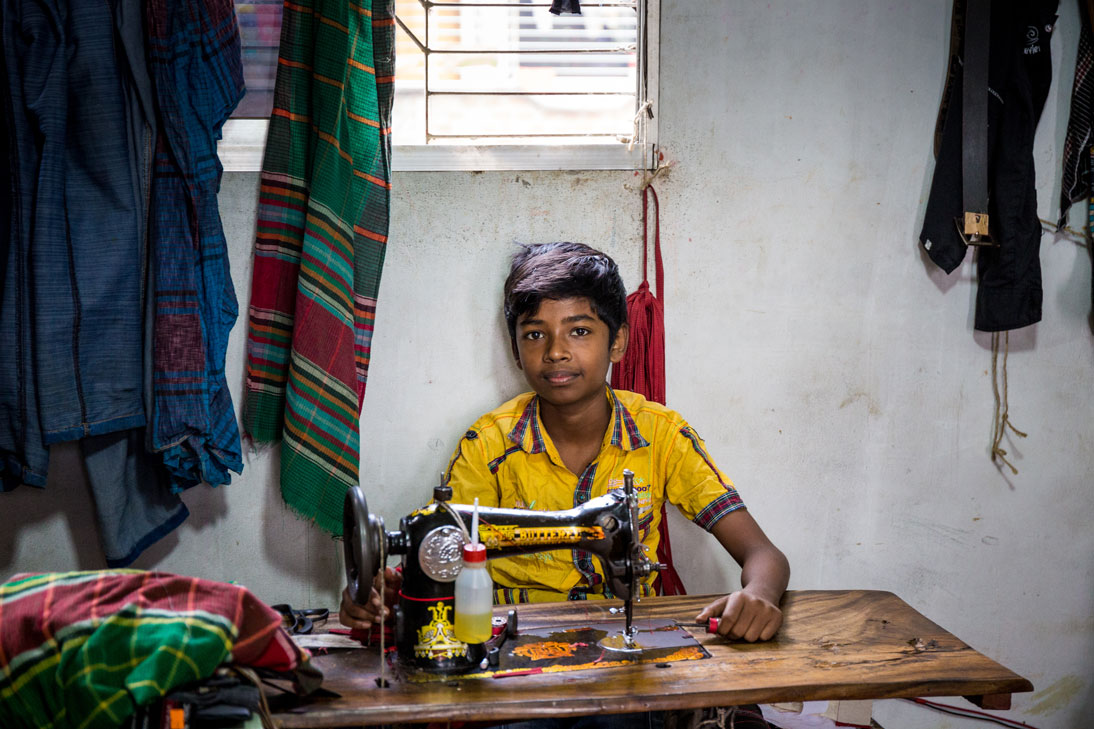How To Tell If A Child Made Your Clothes?

Report From: refinery29
over 218 million children are hard at work — 73 million of those are working in hazardous conditions that “directly endangers their health, safety, and moral development.”
Crazy, right? Not really, when you take into account that consumers — you and me — contribute to this number with every $20 pair of jeans we buy. And when those jeans are hand-dyed by very tiny hands, that discount actually comes at a much higher cost.
While it’s much easier to track the life of clothing once it’s already made, retracing its origins is another story. That’s why transparency, at every level, is crucial. And though we may never know just how much of the industry’s clothing is made by children, here’s what information is currently available.
The Three T’s: Trust, Transparency, & Time
Getting a brand to allow an institution like the International Labour Organization into its supply chain — and making it down to level where one might find children sewing and harvesting cotton — isn’t easy.
“This requires trust building between different partners (brands, factories, NGOs, trade unions) and time to really get better insight in the supply chain — beyond the first tier — and into outsourcing. These partnerships take time and often start by a joint effort to conduct in-depth research in the sector to find out the key issues and in-depth knowledge of the reasons why children are working,” says Jolijn Engelbertink, program officer of business and human rights at the Child Labor Coalition.
“It’s important to note that ensuring that there is no more child labor in your supply chain takes time. An important first step is that a brand acknowledges the fact that there is child labor in its supply chain; only then can the work begin on how to address this.”
There’s No Checklist, Because A Checklist Is Impossible
In theory, a visual guide to spotting a piece made through child labor sounds like a great idea. Several clothing brands feature tabs on their websites dedicated to elaborate flow charts depicting a supply chain that starts in a sustainable mill somewhere in the mountains of Europe or Asia. But in order for those to exist, companies need to be more open about their process from start to finish.
“A garment itself won’t be enough to establish its production. We can’t see from the way it’s made if there is exploitation in its making. It’s up to the brands to publicly disclose its supply chain, which factory it was made in and where the raw materials are sourced,” says Orsola de Castro, co-founder and creative director of advocacy group Fashion Revolution.
“The public can be vigilant, use the hashtag #whomademyclothes, and, from their answers (or lack of) determine if they are satisfied that what they are buying is made in dignified conditions, with supply chain workers protected by unionization, and further than that, any disclosure on the provenance of the raw materials with which it is made.”
Fashion Revolution’s co-founder and global operations director Carry Somers adds that most fashion brands have little or no supply chain transparency at all, down to raw material level: “Child labor is still rife within cotton fields, as well as in ginning and spinning, so how do consumers know that they aren’t supporting child labor with the next cotton garment they buy? Most fashion brands have child labor within their supplier code of conduct, but many brands are failing to take steps to ensure their policies are put into practice.”
“Made In The USA” Doesn’t Always Mean Better

It’s just as crucial to understand which auditing companies and methods are being used in analyzing the supply chain as it is to know where our clothes come from. For example, “Made in Italy” or “Made in the USA” does not guarantee that garments are safely produced, while “Made in China” or “Made in Bangladesh” is not necessarily indicative of lesser standards. There are very good factories in developing countries just as there are very bad systems (sweatshops, low pay, and unsafe conditions) in countries we might consider above suspicion.
“Different countries have different legislations in terms of what child labor consists of. In Myanmar (as in the United Kingdom until 40 years ago), the legal age for work is 13, so although this might not be acceptable to us as consumers, it is nevertheless legal in certain countries,” de Castro explains. Newly drafted laws such as the Modern Slavery Act in the U.K. and a “duty of vigilance” or “duty of care” law in France aims to curb this.
Where a product is made does not say much about the conditions in which it was made. Even in European countries working conditions can be abominable and children can be found working. The label only mentions the first tier of production, so clothing that is produced in a low-risk country can still have its textile coloring, spinning, or other parts of the process done in other countries or areas where the use of child labor is much more likely
Gender Matters, Age Doesn’t
It’s hard to adequately measure, but studies show that young boys are at greater risk of being subjected to hazardous work than girls, but the recording of domestic child labor of young girls goes widely under-reported.
Nearly half of child labor victims are are aged five to 11.
So, What Can We Do?

Honesty — from top to bottom — is key. But it’s only the beginning. To put it into perspective, there are more international organizations that work to end child labor across the globe than there are institutions that teach designers, both up-and-coming and established, how to produce clothes ethically and sustainably.
The first step: Check whether the brand you’re shopping is connected to or a member of a certification of sustainability initiative (one great resource, the app Good On You that makes clocking a brand for its impact on people, animals, and the planet ridiculously easy and engaging, can be found right in your phone) and go from there.
“Ensuring that the supply chain is mapped and published will give brands and consumers the understanding of who their manufacturers are and what are their practices in relation to subcontracting,” adds de Castro. “[Transparency] doesn’t lead to best practice.
It will not prevent child labor or any other abuse, human or environmental, but public disclosure is important to apply vigilance and scrutiny along the supply chain to ensure that if there are deep rooted problems, they can be addressed openly and swiftly. The fashion supply chain is notoriously murky and human rights abuses thrive in secrecy and opaqueness.”
Tags
Related Posts
Child labor, toxic leaks: the price we could pay for a greener future
The battle to stave off Earth’s looming climate crisis is driving engineers to develop hosts of new green technologies. …
January 4, 2021INSIGHT-Ethiopian girls trapped in sex trade as COVID-19 deepens desperation
When Selam fled her village aged 11 to avoid being wed to a much older man in northern Ethiopia, she was relieved and excited to forge a future on her own terms. But that hope was short-lived….
November 9, 2020


